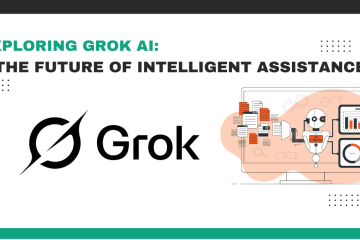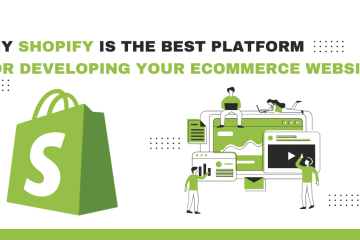In the rapidly evolving world of e-commerce, choosing the right platform can be the difference between exponential growth and digital obscurity. Among the many options available today, Magento has emerged as one of the most powerful and flexible solutions for building online stores. Whether you are a small startup aiming to establish a digital footprint or a large enterprise looking to scale globally, Magento offers the tools, architecture, and community support to fuel your online journey.
In this comprehensive blog post, we will dive deep into what Magento is, why it stands out, its key features, pros and cons, real-world use cases, and tips for getting started.
What is Magento?
Magento is an open-source e-commerce platform written in PHP. Initially developed by Varien Inc., it was officially released in 2008. In 2018, Adobe acquired Magento, bringing it under the Adobe Experience Cloud umbrella, and rebranded it as Adobe Commerce for enterprise users, while the free version continues to be known as Magento Open Source.
Magento is built with flexibility and scalability in mind. It provides businesses with the ability to manage multiple storefronts, currencies, and languages—all from a single backend. This makes it especially popular among companies looking to expand internationally or handle complex product inventories.
Why Choose Magento?
There are countless e-commerce platforms in the market: Shopify, WooCommerce, BigCommerce, PrestaShop, and more. So why do developers, businesses, and enterprises keep choosing Magento? Here are some compelling reasons:
1. Open Source Freedom
Magento Open Source is completely free to download and use. This gives developers complete access to the core code, allowing for deep customization and tailored functionality.
2. Highly Scalable
Magento can handle everything from a few products to hundreds of thousands. Big brands like Coca-Cola, Ford, and Nike have trusted Magento for its ability to scale without sacrificing performance.
3. Customization Capabilities
Every business is unique, and Magento respects that. From custom themes to feature-rich extensions, Magento allows you to tailor every aspect of your online store—from checkout processes to inventory systems.
4. Extensive Community and Marketplace
Magento boasts a strong global community of developers, contributors, and agencies. The Magento Marketplace offers thousands of ready-made extensions and themes for everything from SEO to payment gateways.
5. SEO & Mobile Friendly
Out of the box, Magento comes with advanced SEO tools, clean URLs, and responsive design capabilities. This ensures better rankings on search engines and an optimal experience across devices.
Key Features of Magento
Magento is feature-rich by design. Let’s explore the most important features that make it a top-tier platform:
✔️ Multi-store Management
Manage multiple online stores, each with its own catalog, language, and domain, from a single admin panel.
✔️ Advanced Product Management
Magento supports simple, configurable, bundled, and digital products, making it suitable for every type of business.
✔️ Customer Segmentation
Deliver personalized shopping experiences with customer groupings based on purchase history, location, and demographics.
✔️ Robust Order Management
Track orders, generate invoices, process refunds, and manage shipping with powerful built-in tools.
✔️ Flexible API Integration
Magento offers REST and GraphQL APIs, making it easy to integrate with CRMs, ERPs, POS systems, and third-party tools.
✔️ Security Features
From two-factor authentication to reCAPTCHA and PCI compliance, Magento prioritizes data security and customer privacy.
Magento Open Source vs Adobe Commerce
| Feature | Magento Open Source | Adobe Commerce (Paid) |
|---|---|---|
| Cost | Free | Paid (License required) |
| Hosting | Self-hosted | Adobe Cloud |
| B2B Functionality | No | Yes |
| Advanced Marketing Tools | Limited | Yes |
| Customer Segmentation | Basic | Advanced |
| Technical Support | Community Only | 24/7 Adobe Support |
| AI & Machine Learning | No | Yes (Adobe Sensei) |
Both versions share the same code base, meaning you can start with Open Source and later migrate to Adobe Commerce if needed.
Pros and Cons of Magento
✅ Pros
-
Unlimited Customization: Build a store exactly how you want.
-
Large Developer Ecosystem: Easy to find expert help or extensions.
-
Scalable Architecture: Suitable for startups to enterprise.
-
Built-in Multi-language, Multi-currency Support
❌ Cons
-
Steep Learning Curve: Magento has a complex backend compared to platforms like Shopify.
-
Higher Development Costs: Customizations require skilled developers.
-
Resource Intensive: Requires powerful hosting and regular optimization.
Magento in Real Life: Success Stories
-
Coca-Cola: Coca-Cola uses Magento to provide personalized beverage options in multiple regions, showing how Magento handles high-traffic and complex customization.
-
Helly Hansen: This global outdoor clothing brand uses Magento for its international presence, leveraging its multi-language and multi-store capabilities.
-
Land Rover: Known for luxury SUVs, Land Rover uses Magento to offer parts and accessories through a visually rich, intuitive online store.
Getting Started with Magento
If you’re considering Magento for your e-commerce site, here’s how you can begin:
Step 1: Choose a Version
Start with Magento Open Source for free or explore Adobe Commerce for enterprise features.
Step 2: Set Up Hosting
Magento requires robust hosting. Consider Magento-optimized hosts like:
-
Nexcess
-
Cloudways
-
A2 Hosting
-
AWS (for advanced users)
Step 3: Install Magento
You can install Magento via:
-
Composer (recommended)
-
Softaculous (for beginners using shared hosting)
-
Docker (for advanced development environments)
Step 4: Select a Theme
Choose from free or paid themes on the Magento Marketplace or ThemeForest. Customize as needed.
Step 5: Add Extensions
Enhance your store with extensions for:
-
SEO
-
Payment gateways
-
Shipping
-
Analytics
-
Customer reviews
Step 6: Launch and Optimize
Test your store thoroughly. Optimize for speed, mobile, and search engines. Continue to track performance using tools like Google Analytics and Hotjar.
The Future of Magento
With Adobe’s backing, Magento is becoming increasingly integrated with AI and data-driven tools. Adobe Sensei, for instance, brings personalized product recommendations and intelligent search to Magento stores. As omnichannel selling grows in importance, Magento is evolving to offer seamless integration with mobile apps, PWA (Progressive Web Apps), and even in-store POS systems.
Moreover, Magento’s open-source nature ensures it will continue to thrive thanks to its passionate global community.
Final Thoughts
Magento isn’t just a platform—it’s a comprehensive ecosystem built for serious e-commerce success. With unmatched flexibility, strong developer support, and scalability, it remains a top choice for businesses aiming to build feature-rich, customer-friendly, and high-performance online stores.
Whether you’re just getting started in e-commerce or looking to elevate your brand’s digital strategy, Magento is a platform that grows with you. Yes, it may require more investment in time and technical resources, but the long-term benefits far outweigh the initial hurdles.
Ready to build your online store with Magento? Let this blog be your starting point. Embrace the power of customization, scalability, and community—and take your e-commerce business to the next level.




